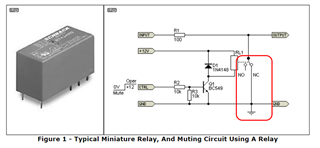Other Parts Discussed in Thread: DAC8760, TMUX1248, TMUX7236, TMUX6236, OPA188
Hi everyone,
How to clamp the output voltage of OPAmps to signal ground by the help of a switch whenever the supply voltage falls under a certain level? How to use the resistor in series to the output of OPAmp that limit the current through the clamping switch. Could you give me some advices or diagram to solve it?
Background: There have the glitch when the OPA277 was power down. Scope as follow:
the red line and green line are the VCC and VEE of OPA 277, and the yellow line is the DAC8760 Vout, and the blue line is the Vout of OPA277.



